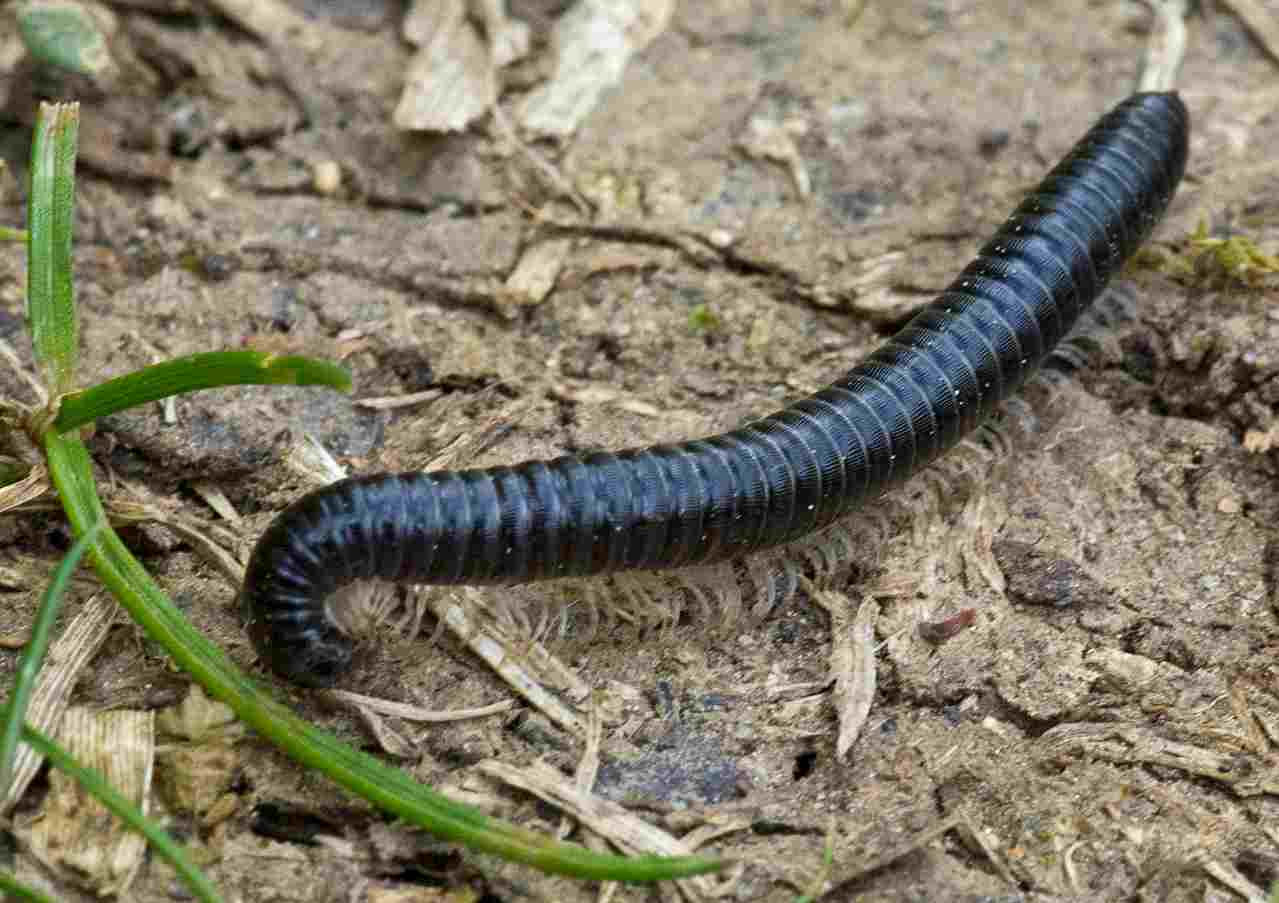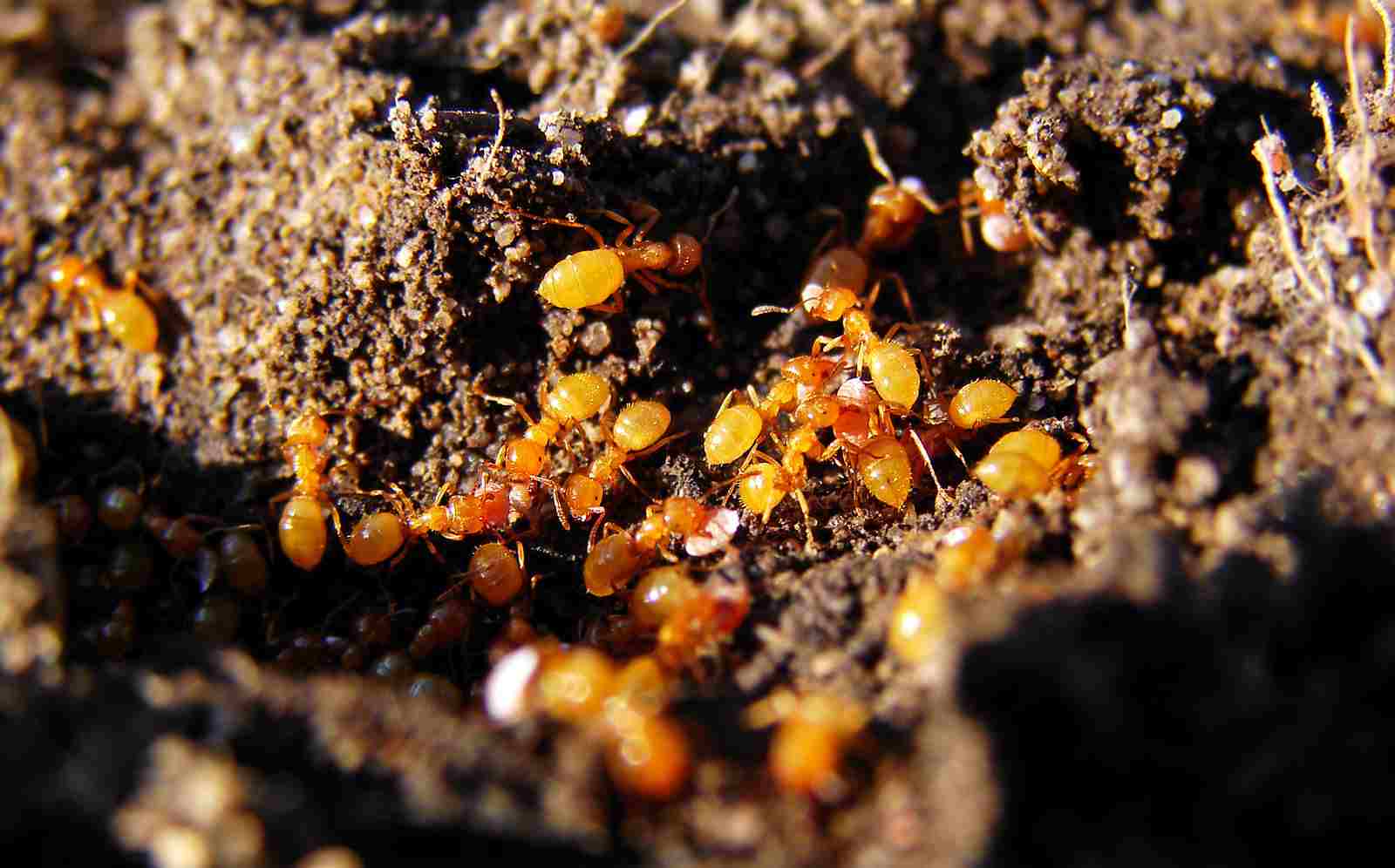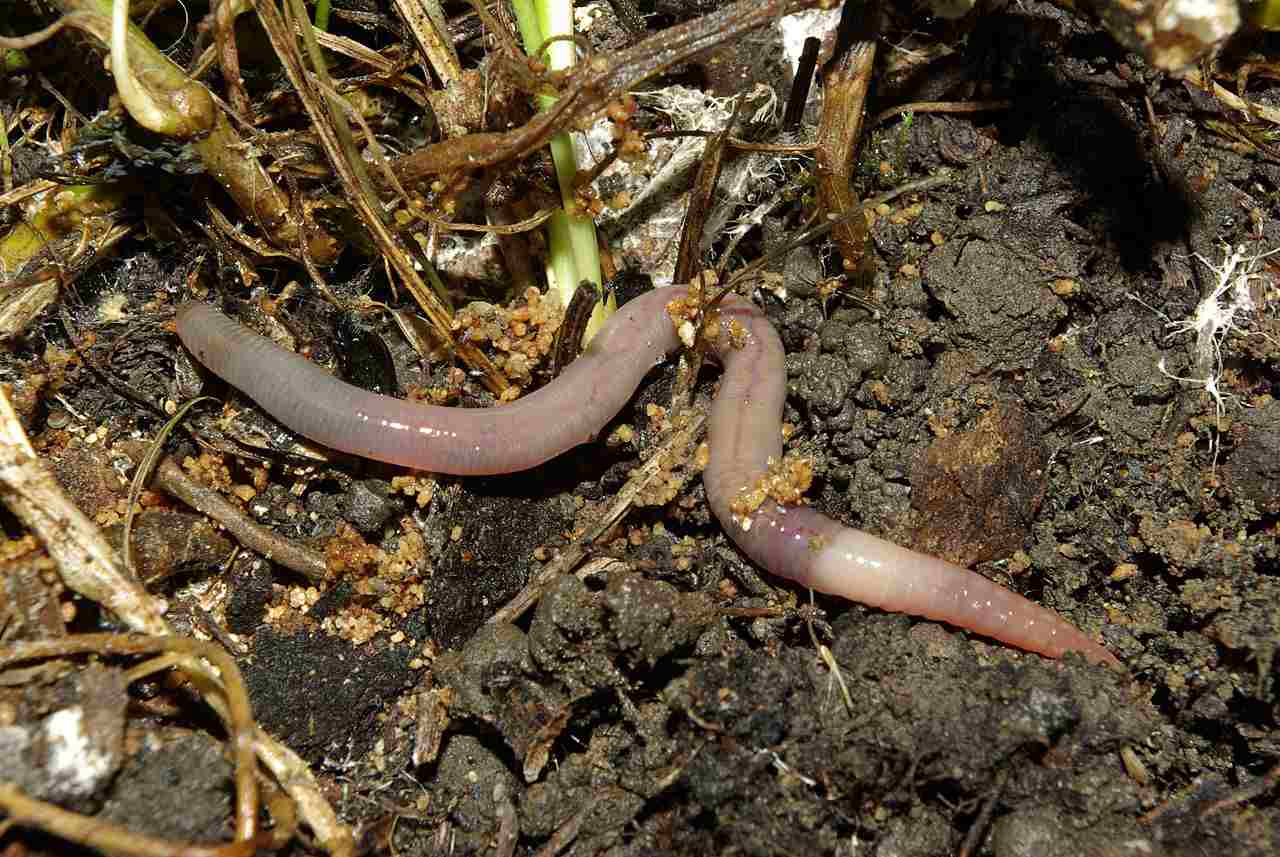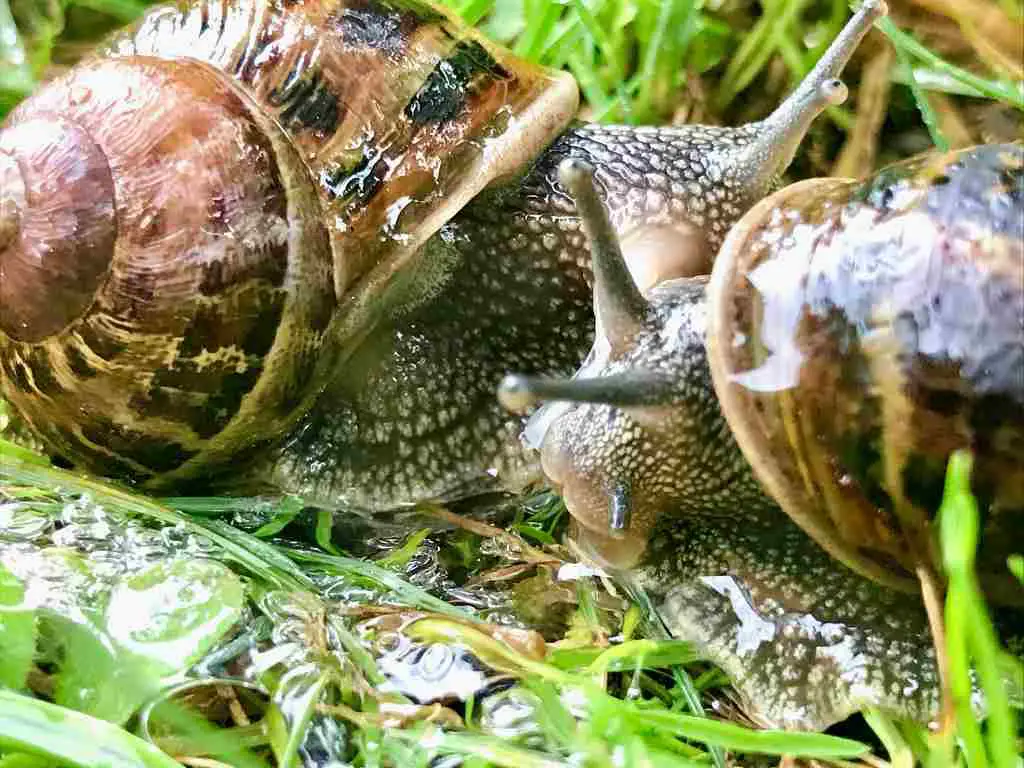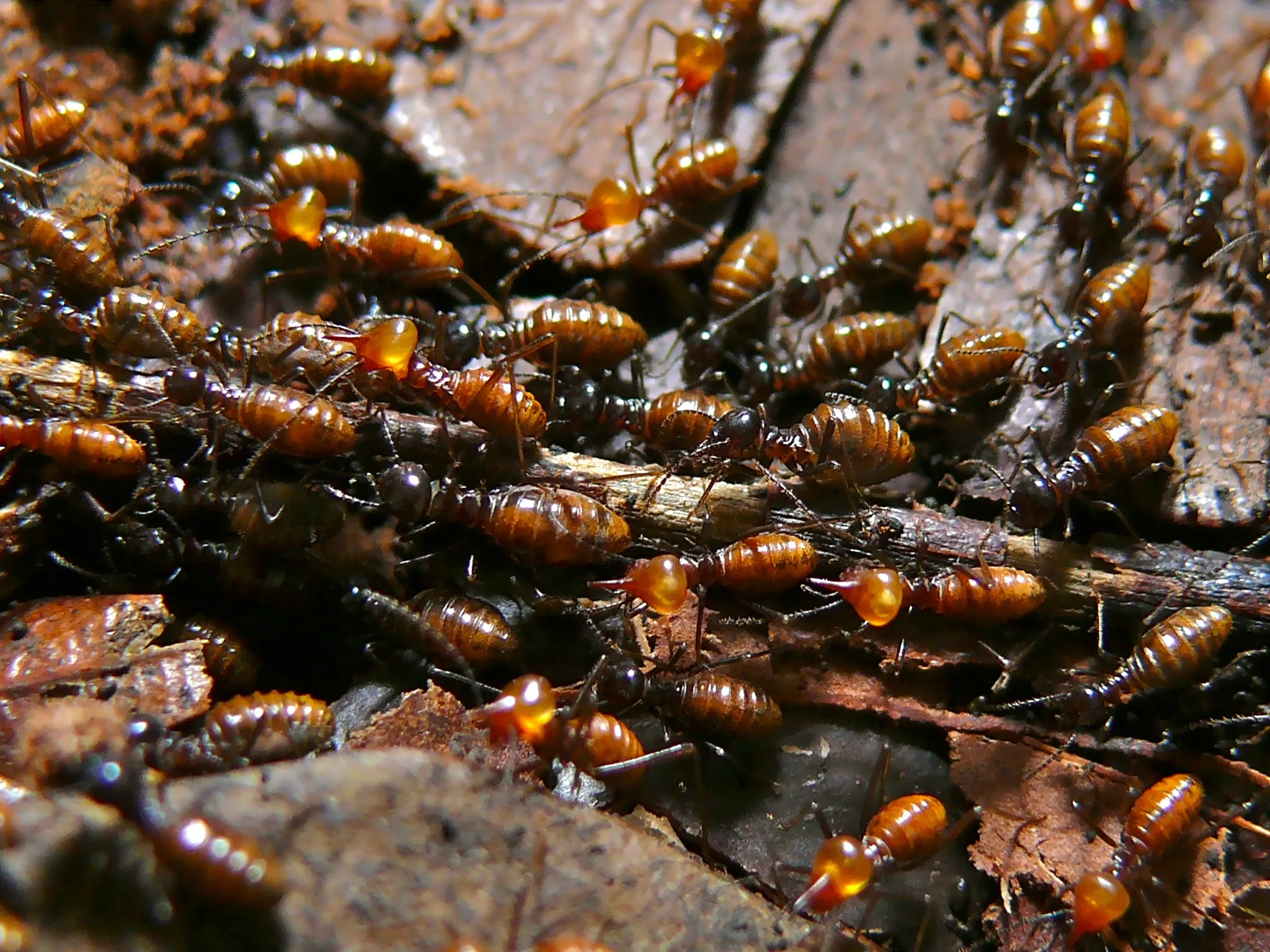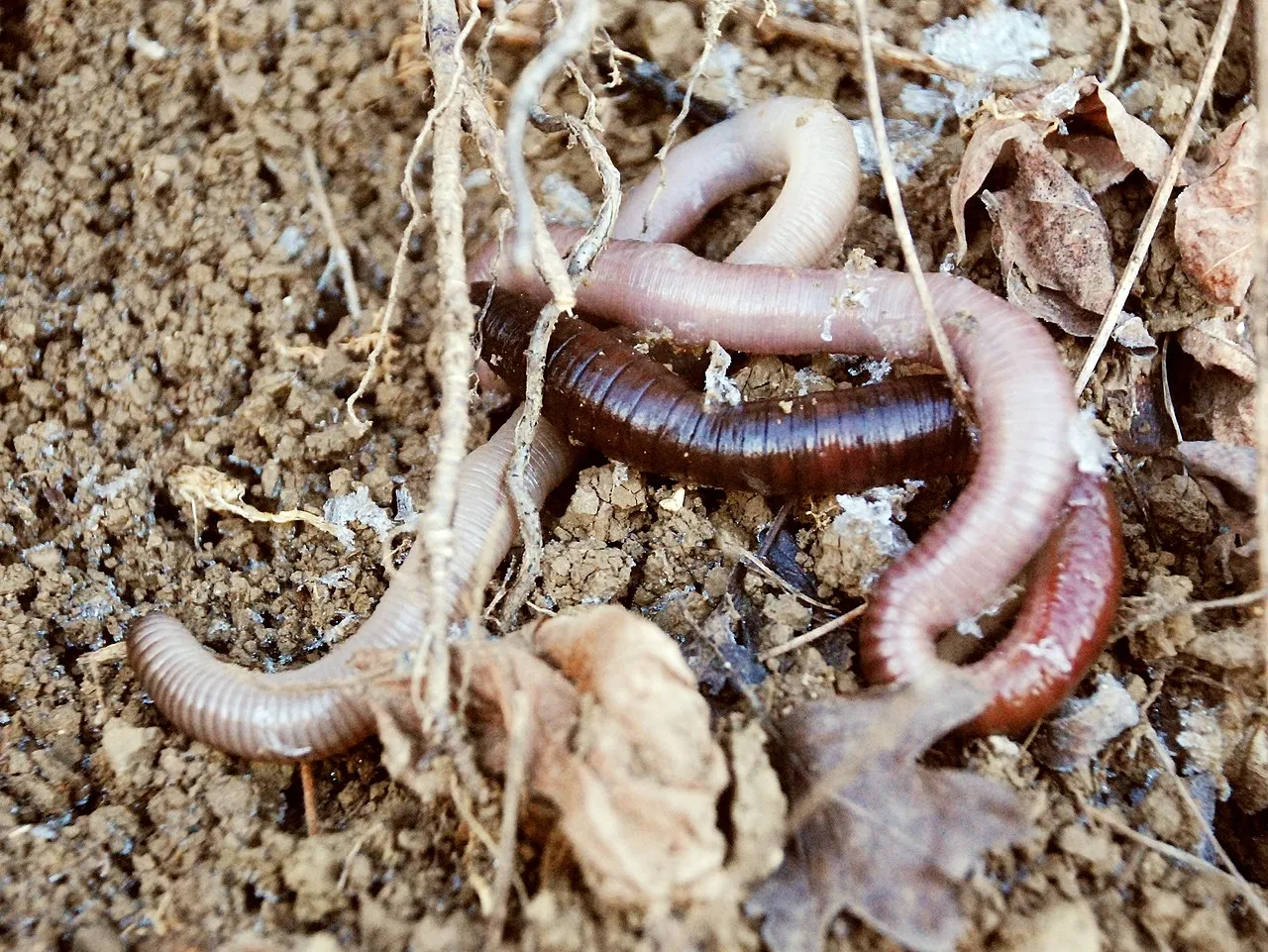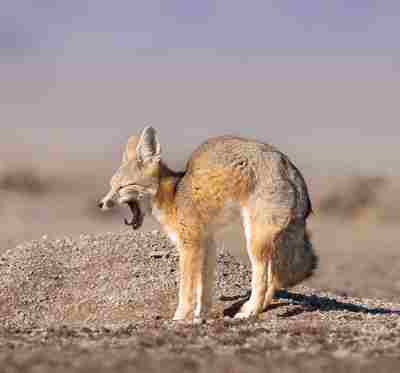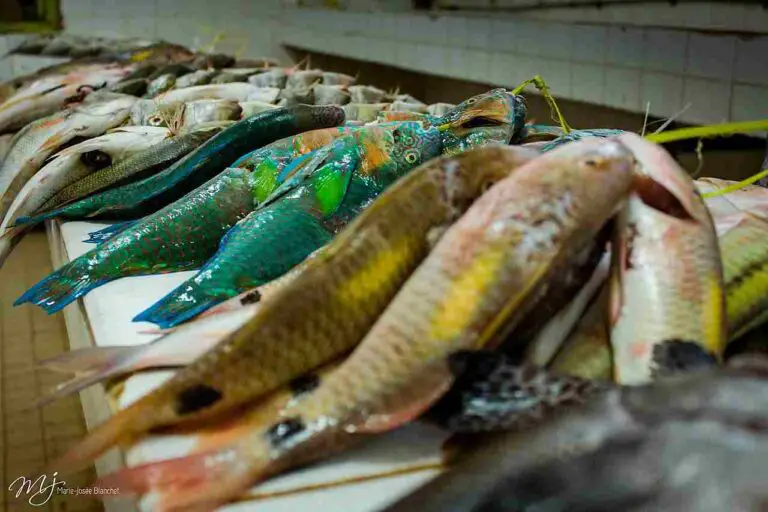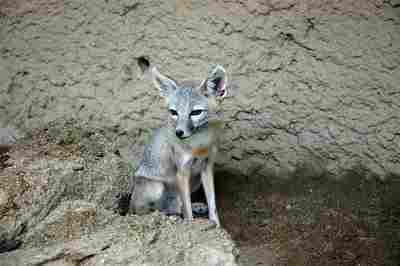15 Detritivores In The Amazon Rainforest Ecosystem
Examples of detritivores in the Amazon rainforest ecosystem are leafcutter ants, dung beetles, termites, and springtails. These organisms play a crucial role in nutrient cycling, decomposition, and soil health. They break down organic matter, returning essential nutrients to the soil, which supports plant growth and the overall health of the rainforest ecosystem. Detritivores like earthworms and millipedes also contribute to soil aeration and structure, while dung beetles and carpenter ants play specific roles in recycling animal waste and decomposing dead wood, respectively.
1. Leafcutter Ants
Leafcutter ants are a crucial group of detritivores in the Amazon rainforest ecosystem, playing a significant role in nutrient cycling and forest regeneration. These industrious ants, belonging to the genera Atta and Acromyrmex, cut and transport leaf fragments back to their underground colonies. However, rather than eating the leaves directly, they use them to cultivate a fungus that serves as their primary food source. This process contributes to the breakdown of plant material, releasing nutrients back into the soil, which benefits the rainforest’s lush vegetation. The leafcutter ants’ activity also creates aeration in the soil, enhancing its structure and promoting the growth of various plants and trees. This symbiotic relationship between the ants and the fungus they farm is a fascinating example of nature’s interconnectedness and plays a key role in maintaining the health of the Amazon ecosystem.
2. Dung Beetles
Dung beetles in the Amazon rainforest ecosystem are nature’s recyclers, specializing in processing animal waste. These beetles collect, roll, and bury dung, thereby aiding in the decomposition of organic matter and the recycling of nutrients. By breaking down dung, they help to improve soil quality and reduce the spread of diseases among wildlife. Additionally, their actions promote seed dispersal and enhance the overall health of the rainforest ecosystem.
3. Termites
Termites in the Amazon rainforest play a key role in decomposing dead plant material, particularly wood and cellulose-based matter. As efficient detritivores, they contribute to nutrient cycling by breaking down tough plant fibers, facilitating the release of nutrients into the soil. Termite activity also influences soil structure and aeration, contributing to the health and diversity of plant life in the rainforest.
4. Springtails
Springtails are minute detritivores that thrive in the moist leaf litter of the Amazon rainforest. They feed on decaying plant material, fungi, and microbes, playing a vital role in breaking down organic matter. As they consume and decompose this material, springtails help to enrich the soil with nutrients, promoting plant growth and maintaining the health of the forest floor ecosystem.
5. Millipedes
Millipedes in the Amazon rainforest are slow-moving detritivores that contribute to the breakdown of organic matter. They consume decaying plant material, such as leaves and wood, and their feeding activity helps to create nutrient-rich soil. As they move through the forest floor, millipedes also contribute to soil aeration and the distribution of organic matter, supporting the overall health of the ecosystem.
6. Earthworms
Earthworms in the Amazon rainforest are essential detritivores, playing a significant role in soil health and fertility. By feeding on organic matter and excreting nutrient-rich castings, they enhance soil structure and promote plant growth. Earthworms also improve soil aeration and water retention, contributing to a more balanced and productive rainforest ecosystem.
7. Slugs
Slugs in the Amazon rainforest are soft-bodied detritivores that feed on decaying plant matter, fungi, and other organic debris. Their feeding habits contribute to nutrient cycling and help maintain the health of the forest floor. By breaking down organic material, slugs play a role in enriching the soil and supporting the growth of various plants and trees in the ecosystem.
8. Land Snails
Land snails in the Amazon rainforest are detritivores that consume decaying plant material, fungi, and even small dead animals. By breaking down this organic matter, they help release nutrients into the soil, promoting plant growth. Land snails also contribute to the decomposition process, which is essential for maintaining a healthy and vibrant rainforest ecosystem.
9. Isopods
Isopods, also known as pillbugs or sowbugs, are detritivores in the Amazon rainforest that feed on decaying plant material and other organic debris. Their activity contributes to the decomposition process, helping to break down dead matter and recycle nutrients into the soil. Isopods also play a role in soil aeration and structure, supporting a diverse and thriving forest floor ecosystem.
10. Woodlice
Woodlice, a type of isopod, are important detritivores in the Amazon rainforest, feeding on decaying plant matter and contributing to the decomposition process. By breaking down organic material, woodlice help recycle nutrients back into the soil, aiding plant growth and promoting a healthy ecosystem. Their activity also contributes to soil aeration and moisture balance, benefiting the rainforest’s complex web of life.
11. Fungus Gnats
Fungus gnats are small flies in the Amazon rainforest that play a role in the decomposition of organic matter. The larvae of these gnats feed on fungi, algae, and decaying plant material, contributing to nutrient cycling in the ecosystem. By breaking down organic matter, fungus gnats help enrich the soil, supporting the growth of plants and the overall health of the forest.
12. Daddy Longlegs
Daddy longlegs, also known as harvestmen, are detritivores in the Amazon rainforest that feed on a variety of organic matter, including decaying plant material, fungi, and small dead insects. Their feeding habits contribute to the decomposition process and nutrient cycling, aiding in soil fertility and plant growth. By playing a role in the breakdown of organic material, daddy longlegs help maintain a balanced and thriving rainforest ecosystem.
13. Carpenter Ants
Carpenter ants in the Amazon rainforest are known for their role in breaking down dead wood and other plant material. Unlike termites, carpenter ants don’t consume wood but excavate it to create nesting sites. However, their activity still contributes to the decomposition process and nutrient recycling in the ecosystem. By breaking down dead wood, carpenter ants help maintain the health and structure of the forest, allowing new growth and promoting biodiversity.
14. Springtail Beetles
Springtail beetles in the Amazon rainforest are detritivores that specialize in feeding on decaying plant material, fungi, and other organic debris. They play a crucial role in breaking down this material, contributing to nutrient cycling and soil enrichment. By helping to decompose organic matter, springtail beetles support plant growth and the overall health of the rainforest ecosystem.
15. Wood Roaches
Wood roaches in the Amazon rainforest are detritivores that consume a wide range of decaying organic material, including leaves, wood, and other plant debris. Their activity contributes to the decomposition process, aiding in nutrient recycling and soil fertility. By breaking down organic matter, wood roaches help maintain a balanced and healthy rainforest ecosystem, supporting the growth of diverse plant life.
*Summary
-
Leafcutter Ants: Cultivate fungus using cut leaves, contributing to nutrient cycling and soil aeration.
-
Dung Beetles: Collect and bury animal dung, aiding decomposition and nutrient recycling.
-
Termites: Decompose dead wood and cellulose-based matter, contributing to soil structure and nutrient cycling.
-
Springtails: Consume decaying plant material and fungi, promoting nutrient enrichment and soil health.
-
Millipedes: Feed on decaying plant material, aiding in decomposition and soil aeration.
-
Earthworms: Consume organic matter, enhance soil structure, and promote plant growth through nutrient-rich castings.
-
Slugs: Feed on decaying plant matter and fungi, aiding in nutrient cycling and forest floor health.
-
Land Snails: Consume decaying plant material, fungi, and small dead animals, aiding in decomposition and nutrient release.
-
Isopods: Feed on decaying plant material, contributing to nutrient cycling and soil aeration.
-
Woodlice: A type of isopod that breaks down plant material, promoting nutrient recycling and soil health.
-
Fungus Gnats: Larvae feed on fungi and decaying plant material, aiding in nutrient cycling.
-
Daddy Longlegs: Feed on decaying plant material, fungi, and small dead insects, aiding in decomposition.
-
Carpenter Ants: Excavate wood for nesting, contributing to the breakdown of dead wood and nutrient cycling.
-
Springtail Beetles: Feed on decaying plant material and fungi, aiding in nutrient cycling and soil enrichment.
-
Wood Roaches: Consume a wide range of decaying organic material, promoting decomposition and soil fertility.
| Detritivores |
Roles in the Amazon Rainforest
|
| Leafcutter Ants |
Cut leaves to cultivate fungus, aiding nutrient cycling
|
| Dung Beetles |
Collect and bury dung, promoting decomposition
|
| Termites |
Decompose dead wood and improve soil structure
|
| Springtails |
Consume decaying plant material, contributing to soil health
|
| Millipedes |
Feed on plant material, aiding in soil aeration
|
| Earthworms |
Enhance soil structure, promote plant growth
|
| Slugs |
Consume decaying plant matter, aiding nutrient cycling
|
| Land Snails |
Feed on decaying plant material, aiding nutrient release
|
| Isopods |
Consume decaying plant material, aiding soil aeration
|
| Woodlice |
Break down plant material, promoting nutrient recycling
|
| Fungus Gnats |
Larvae feed on fungi, aiding in nutrient cycling
|
| Daddy Longlegs |
Feed on plant material and fungi, aiding in decomposition
|
| Carpenter Ants |
Excavate wood, contributing to nutrient cycling
|
| Springtail Beetles |
Feed on plant material, aiding soil enrichment
|
| Wood Roaches |
Consume a range of decaying organic material, aiding decomposition
|
